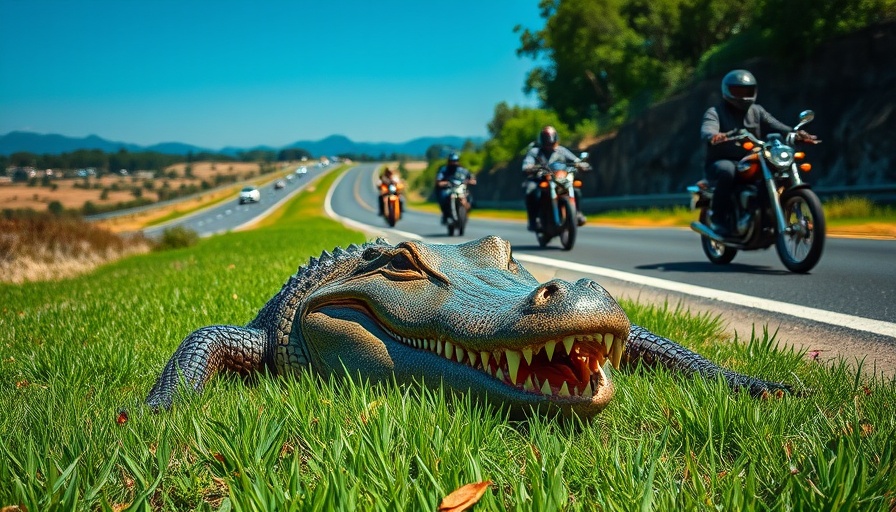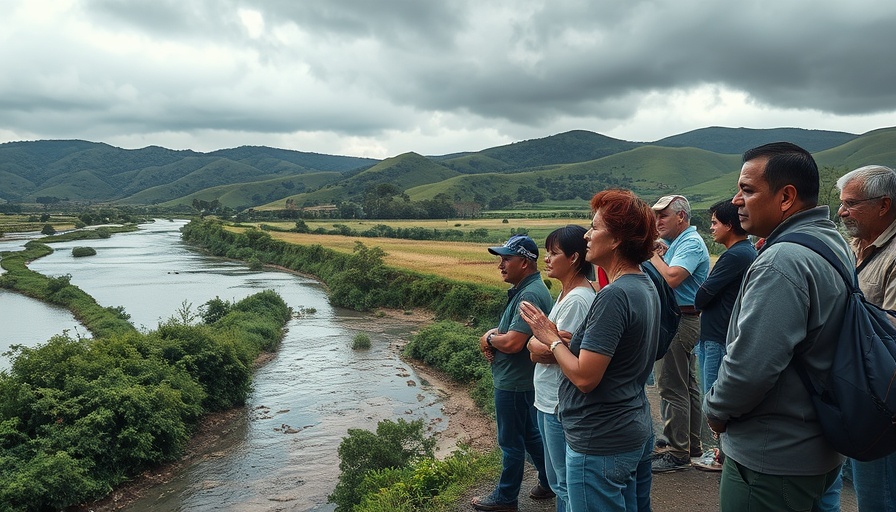
The Unexpected Encounter: Motorcyclists vs. Alligator
In a bizarre incident on the interstate highway in Volusia County, Florida, two motorcyclists found themselves in a perilous situation after colliding with a six-foot alligator. This unusual crash on I-4 raises questions about wildlife hazards on roadways and underscores the need for increased awareness among drivers, especially in regions where wildlife encounters are not uncommon.
Understanding Wildlife Road Hazards
Florida is renowned for its diverse ecosystem, which includes not only breathtaking beaches but also an array of wildlife that can disrupt daily commutes. Alligators, while iconic to the state, pose a significant risk, especially on highways that cut through their natural habitats. This incident serves as a grim reminder of the potential dangers that can occur when wildlife crosses busy roads.
Learning from the Incident: Safety Precautions
It is imperative that motorcyclists and all drivers exercise caution, especially in wildlife-rich areas. Florida transportation officials recommend several preventive measures: reduce speed in areas marked with wildlife crossing signs, stay alert for sudden animal crossings, and report any animal hazards on the roadway. Increased caution could prevent accidents that might not only cause injuries to the drivers but also endanger the wildlife.
The Broader Implications for Road Safety
Recent statistics show that animal-related vehicle accidents have increased in many regions, prompting a call for enhanced road safety measures. Authorities argue that building wildlife overpasses or tunnels, which have proven successful in other parts of the country, could significantly reduce these encounters. In light of the rising number of such incidents, local governments may need to reassess their strategies for managing wildlife populations near busy roadways.
Raising Awareness Through Education
Education plays a crucial role in preventing wildlife-related accidents. Developers can engage in initiatives that raise awareness among drivers about the potential dangers of wildlife on roads. Integrating safety education into driving programs can equip drivers with the knowledge they need to navigate these hazards safely.
A Community Response to Wildlife Crossings
The involvement of local communities in wildlife conservation efforts is essential in addressing this issue. Community programs that promote safe driving habits and respect for wildlife can foster a culture of prevention. Collaboration between wildlife organizations and transport authorities can lead to actionable plans to mitigate the risks associated with highway crossings.
What’s Next in Florida’s Wildlife Management?
The Florida Fish and Wildlife Conservation Commission is likely to step up its efforts in addressing the increasing number of wildlife encounters on highways. Future programs may include more robust tracking of wildlife movement patterns, which will help inform road safety measures and potentially reduce the incidence of accidents.
The collision between the motorcycle and the alligator should serve as an eye-opener for all Florida residents. As we continue to interact more closely with wildlife, it becomes crucial to strike a balance between transportation and ecological preservation. By increasing awareness and advocating for smarter roadway designs, Florida can work towards safer travel experiences for its residents.
 Add Row
Add Row  Add
Add 




 Add Row
Add Row  Add
Add 

Write A Comment